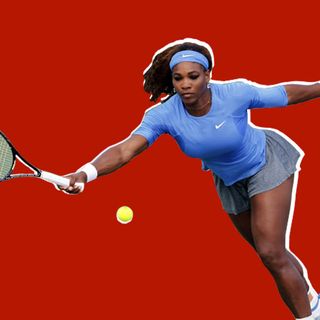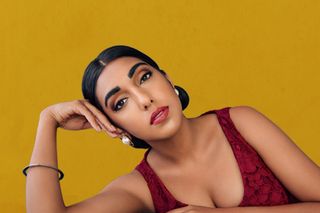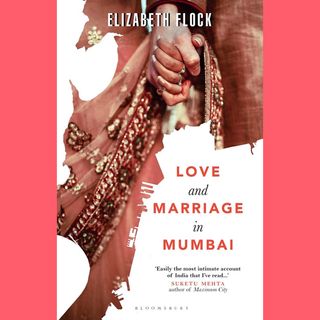
Controversial Crush: Rupi Kaur
Her mass appeal on Instagram isn’t a legit critique of her work.

In the series Controversial Crush, we dote on controversial women and tell you why.
“Poetry is the new pop, man,” Jimmy Fallon proclaimed on Tuesday night’s episode of The Tonight Show. Seated across from him was a young woman of Indian origin, who, with her sleek, shiny hair and smart suit, might have looked more like a pop star than a poet. Rupi Kaur didn’t appear nervous about being on late night television — she’s no stranger to public speaking — but she did express to Fallon, with some bemusement, that she used to think she had to become a pop star or an actress to be invited there.
Hers is a kind of fame that does not fall into any of the traditional categories. Kaur gained prominence, like so many other millennials, through Instagram. She also gained notoriety; for the medium through which she became famous, as well as for the quality of her poetry — or lack thereof, as many maintain.
Kaur’s poems are brief, direct, and largely free of poetic device. Her contemporaries, Nayyirah Waheed and Warsan Shire, operate in the same style. But while those poets have received various accolades for their powerful diction, Kaur, whose diction is considerably more primitive, often bears the brunt of the fiercest backlash, painted as the death of good poetry, and perhaps even good sense.
But Rupi Kaur is not the first person to challenge the boundaries of poetry; the form is constantly evolving. The 20th century was full of once-reviled, now-celebrated poets — many of them women — who pushed the limits of confessional, frank verse: Sylvia Plath, Carol Ann Duffy, Anne Sexton. Kaur may not be well-versed nor particularly adept in literature. She may not have ever read John Milton, John Keats, or even E.E. Cummings. But this lack of context may be exactly why she has been able to revolutionize the genre.
Her singular unpopularity with critics is due to what I personally find most admirable about Kaur: her status as an uninhibited rule breaker. She did not navigate a slow rise through the ranks of the publishing world; doing an MFA, networking, and working for years as an underpaid teaching or editorial assistant. She catapulted to fame after one of her Instagram posts went viral, and then capitalized on her success to the fullest degree. This is not standard poet behavior — it’s more typical of a marketing tycoon, which is why many find her so offensive. But I applaud any brown woman with the audacity to put aside the impostor syndrome we are expected to have and market herself so unabashedly.
She thought to combine writing and illustration into one medium, but her critics would say this was no masterstroke, if it was for the sole purpose of performing better on social media. And she has been made fun of for caring more about a book’s cover designer than its author — but what people fail to mention is that this is likely because she was a design student, and she illustrated and designed her self-published book, milk and honey, entirely on her own. She might be a rule breaker and an opportunist, but she is simultaneously an innovator, and the stark newness of her form and demeanor can certainly be disarming.
Perhaps this is why the backlash Kaur has experienced often has an aggressive, even sour, tone. Her status as one of the first “pop poets” became further cause for public disdain when she told The Cut last year that she hasn’t finished reading a book all year. The Cut piece was dripping with thinly veiled malice. “The publicist has warned me in advance that this could be a challenging place to speak — ‘They adore her,’ so she may be obliged to sign books — but we are able to browse undisturbed.”
Their evidently low estimation of Kaur is not inconsistent with other critics. “In interviews, [Kaur] emphasizes the importance of being a brown woman in traditionally white spaces,” wrote Chiara Giovanni for Buzzfeed. “Despite her political stance, however, Kaur’s work and public persona are carefully modulated in order to maximize her marketability to both a Western metropolitan readership and the grassroots social media audience to whom she owes her fame” — as if it is Kaur’s fault that people only respond to Western sensibilities. Incidentally, Kaur’s poem women of colour is fairly astute to this: “our backs / tell stories / no books have / the spine to carry.”
Kaur’s most vocal and visible critics are the elite, white, literary circles that she bypassed in her savvy path to success. They are hesitant to even classify this as poetry. It’s not hard to believe they view her as a threat to their establishment. But her poetry was not meant for them. Kaur has followers of all races and cultures who adore and identify with her bare discussion of love, abuse, feminism, and body image. But equally, if not more, substantive themes in Kaur’s corpus are immigration, cultural identity, and beauty as a brown woman.
“we are all born / so beautiful / the greatest tragedy is / being convinced we are not.” This is the entirety of one of Kaur’s most lampooned poems from her first book, milk and honey. There are no complex literary devices at work here, nor any great poetic genius, to be sure. But while the subject matter is ostensibly hippy-dippy — ‘everyone is beautiful!’ — there is at least one layer of complexity that cannot be overlooked.
Brown women are constantly told that their appearance is inferior. Abroad: You’re so pretty, for an Indian. At home: Remove your tan, wax your moustache. Kaur’s writings often (directly, or indirectly) speak to the inescapable, learned ugliness one feels as a brown woman, the feeling of never being able to match up to white ideals of beauty. Kaur’s poem about body hair, for instance, has a more poignant impact on a brown woman who has been habitually shamed for her natural appearance.
Jimmy Fallon, usually a smooth talker no matter how famous his guest, seemed at a loss for what to say to Kaur on Tuesday night, stumbling through an awkward and marginally relevant anecdote about Sam Smith for the majority of the segment. He seemed utterly unsure of how to present the controversial woman before him, whose body of work is unassuming to the point of ignorance. But Rupi Kaur is not ignorant, which perhaps Fallon picked up on from her calm, quietly defensive manner.
“Art should be accessible to the masses, and when we start to tailor it in a way that keeps people out, then there’s an issue with that,” Kaur once said in response to criticism. “Like, who are we really creating art for?”
Written by Urvija Banerji.
Urvija Banerji is the Features Editor at The Swaddle, and has previously written for Rolling Stone India and Atlas Obscura. When she's not writing, she can be found in her kitchen, painting, cooking, picking fights online, and consuming large amounts of coffee (often concurrently).
Related


How to Fight in Front of the Kids
